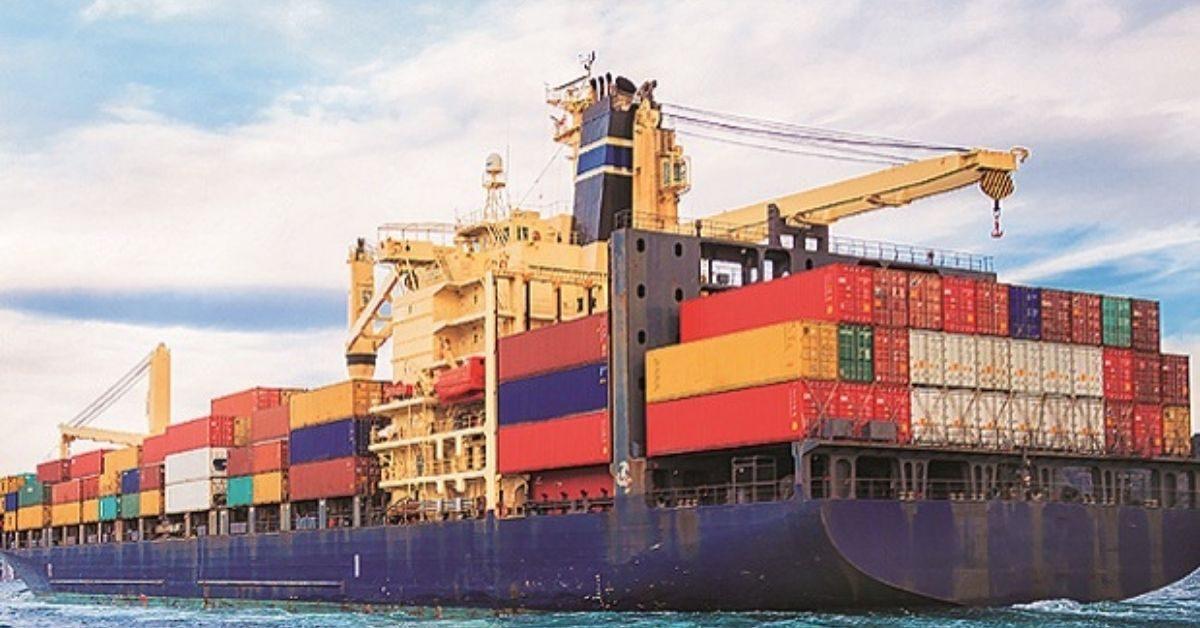As compared to the freight rates in June, the container freight rates on an average, for all key trades out of India, have either decreased or remained steady this month, with the exception of intra-Asia trades.
On the westbound India-Europe trade, rates from West India [Jawaharlal Nehru Port (JNPT)/Nhava Sheva or Mundra Port] to Felixstowe/London Gateway (UK) now stand at around US$5,250/20-foot container and US$5,950/40-foot container, down from US$6,000 and US$7,150, respectively, last month.
For cargo moving from West India to Rotterdam (the Netherlands), average rates have slid to US$5,250/20-foot box and US$5,750/40-foot box, from US$6,000 and US$6,300, respectively.
Eastbound rates have also tapered off – now hovering at around US$1,825/20-foot container and US$1,950/40-foot container, versus US$1,925 and US$2,050 for shipments from Felixstowe/Rotterdam to Nhava Sheva or Mundra.
However, contract rates for Indian cargo to the US East/West/Gulf coasts have remained steady with the June levels – averaging at US$8,317 per 20-foot box, from US$10,090, and US$10,500 per 40-foot box, from US$12,693, for bookings to the US East Coast (New York), and at US$10,250, from US$11,725, and US$12,850, from US$14,765, respectively, for the US West Coast (Los Angeles). For the West India-US Gulf Coast trade, rates are hovering at around US$9,150 per 20-foot and US$11,500 per 40-foot container, versus US$10,906 and US$13,713, respectively.
On the return leg, rates offered by leading liners have dropped by between 10% and 15%, on average, for cargo shipped from the US East/West/Gulf coasts to West India (Nhava Sheva/Mundra).
On the India-intra-Asia/Far East trades, rates have moved up this month, compared to the June trends, in the wake of capacity pressure fuelled by fewer sailings out of some hub ports in the region and the sudden demand arising from China’s post-lockdown recovery.
For cargo loads from West India to South China (Yantian), current average rates are at US$550/20-foot box and US$850/40-foot box, up from $450 and $700 respectively a month earlier. For West India-Singapore shipments, rates have hit US$500/20-foot box and US$750/40-foot box, increasing from the US$405 and US$610, respectively, last month.
For South China-West India, carriers are accepting bookings at about $2,550/20-foot container and $4,550/40-foot container, compared with $2,150 and $4,050 in June, according to the data analysis.
With the industry moving into the typical peak demand season soon, Indian shippers are bracing for rate hikes, especially on the India-US trade.
Mediterranean Shipping Co. (MSC) and Hapag-Lloyd have already issued general rate increase (GRI) and peak-season surcharge notices for next month.
At the same time, void calls and port call changes continue to a major concern for Indian exporters/importers. Nhava Sheva and Mundra have seen a string of blank sailings on major services connecting to Europe, operated by MSC and Hapag-Lloyd.
The Indian Ocean Service (IOS), jointly operated by Hapag-Lloyd and ONE, has announced a long streak of intermittent void calls for India, running up to November, as part of a schedule recovery programme.
“These changes will be in place for the remaining part of Q3 and Q4 2022 to improve the service’s schedule reliability,” Hapag-Lloyd noted in a new schedule update advisory.
Meanwhile, Container xChange, an equipment marketplace provider, noted that southern Indian ports are facing a shortage of containers because of the disruptions plaguing Sri Lanka’s Colombo Port, which handles the bulk of transhipment volumes out of the region.
“There has been a 25% shortage of containers at the Chennai Port which has made it face a rise in shipping costs,” the analyst said. “With the trade routes between Asia and the US as well as Asia and Europe opening, the shipping industry in the country is struggling to keep up with the gap between container demand and supply.”
Christian Roeloffs, co-founder and CEO of Container xChange, added, “Colombo has always been a priced possession of the Indian maritime trade; however, Sri Lanka’s crippling economic crisis has triggered an altering response in the region’s shipping industry. To put things into perspective, the industry has observed some freight forwarders avoid calling Colombo port. This has put maritime logistics in other parts of the region are in a beneficial state.”








